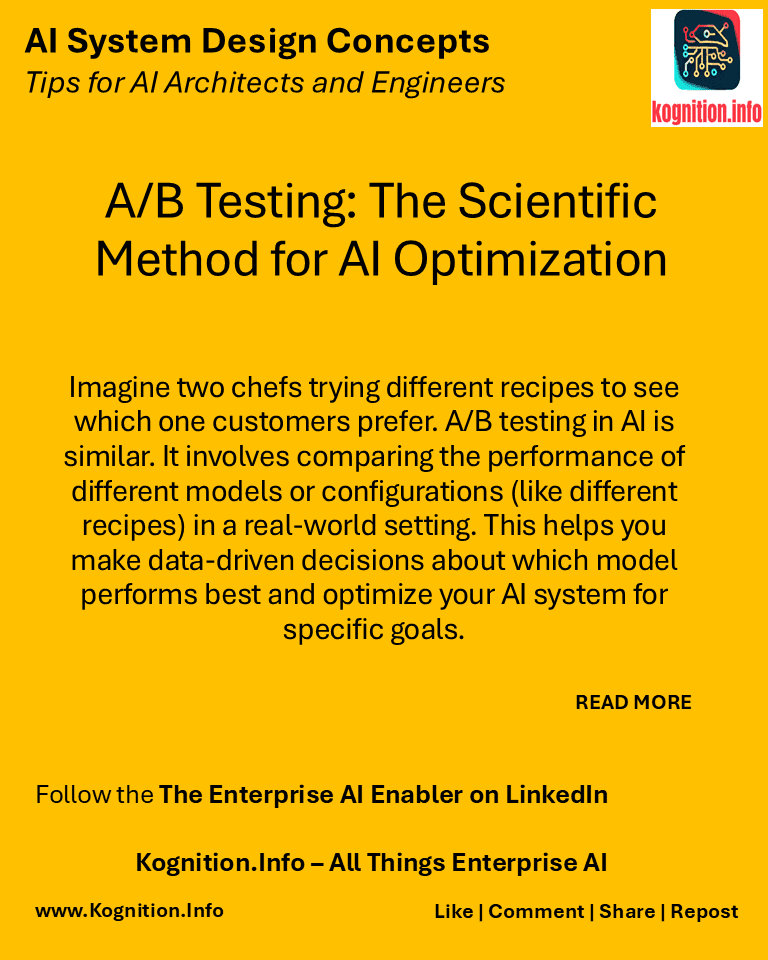
Imagine two chefs trying different recipes to see which one customers prefer. A/B testing in AI is similar. It involves comparing the performance of different models or configurations (like different recipes) in a real-world setting. This helps you make data-driven decisions about which model performs best and optimize your AI system for specific goals.
Use cases:
- Comparing model architectures: Evaluating which model architecture (e.g., deep neural network vs. decision tree) performs better for a specific task.
- Optimizing hyperparameters: Testing different hyperparameter settings to find the combination that yields the best results.
- Evaluating user interface changes: Testing different versions of a user interface to see which one leads to better user engagement or conversion rates.
How?
- Define metrics: Clearly define the metrics you’ll use to measure performance (e.g., accuracy, click-through rate, conversion rate).
- Create variations: Develop different versions of your model or configuration to compare.
- Split traffic: Divide users or data into groups and expose each group to a different variation.
- Collect data: Gather data on the performance of each variation.
- Analyze results: Use statistical analysis to determine if there are significant differences in performance between variations.
Benefits:
- Data-driven decisions: Make informed decisions based on real-world performance data.
- Improved performance: Optimize AI systems for specific goals and improve key metrics.
- Reduced risk: Test new ideas or changes in a controlled environment before full rollout.
Potential pitfalls:
- Sample size: Ensure you have a sufficient sample size to draw meaningful conclusions.
- External factors: External factors (e.g., seasonality, marketing campaigns) can influence results.
- Bias in user groups: Ensure that user groups are representative of the overall population.
